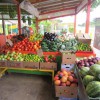 In recent years, consumers increasingly are seeking out locally grown foods, due to concern for freshness, food safety, and the carbon footprint associated with food sourced from distant places. This 5-page fact sheet promotes local vegetable consumption by pointing out some of the advantages, benefits, and business opportunities associated with local vegetable production and consumption. Written by Qingren Wang, Edward A. Evans, Margie Pikarsky, and Teresa Olczyk, and published by the UF Department of Horticultural Sciences, September 2014.
In recent years, consumers increasingly are seeking out locally grown foods, due to concern for freshness, food safety, and the carbon footprint associated with food sourced from distant places. This 5-page fact sheet promotes local vegetable consumption by pointing out some of the advantages, benefits, and business opportunities associated with local vegetable production and consumption. Written by Qingren Wang, Edward A. Evans, Margie Pikarsky, and Teresa Olczyk, and published by the UF Department of Horticultural Sciences, September 2014.
http://edis.ifas.ufl.edu/hs1251
Category: Agriculture
An Overview of Carbon Markets for Florida Forest Landowners
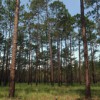 Payments for sequestering carbon in forests can be an important supplemental income source in the southern US which includes one-third of the contiguous US forest carbon stocks and supplies 16% of the world’s wood. It is difficult to understand the carbon market and certification options available to Florida forest landowners and the possible risks of participating in them. To address this need, UF/IFAS forest management specialists provide this overview of forest carbon markets in the United States as of 2014 and compare key features of the four major carbon offset certification options. This 9-page fact sheet was written by José R. Soto, Francisco J. Escobedo, and Damian C. Adams, and published by the UF Department of School of Forest Resources and Conservation, July 2014.
Payments for sequestering carbon in forests can be an important supplemental income source in the southern US which includes one-third of the contiguous US forest carbon stocks and supplies 16% of the world’s wood. It is difficult to understand the carbon market and certification options available to Florida forest landowners and the possible risks of participating in them. To address this need, UF/IFAS forest management specialists provide this overview of forest carbon markets in the United States as of 2014 and compare key features of the four major carbon offset certification options. This 9-page fact sheet was written by José R. Soto, Francisco J. Escobedo, and Damian C. Adams, and published by the UF Department of School of Forest Resources and Conservation, July 2014.
http://edis.ifas.ufl.edu/fr387
Citrus Mechanical Harvesting Systems–Continuous Canopy Shakers
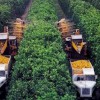 Mechanization has been the hallmark of American agriculture. Nearly 100 percent of the agronomic crops grown in the United States are plowed, planted, and harvested with mechanical equipment. Mechanical harvesting equipment for sweet oranges has been studied extensively since the 1970s and during the 2005/06 harvest season, trunk and canopy shakers harvested more than 36,000 acres of Florida citrus. Mechanically harvested citrus acreage, however, has decreased significantly since 2005. During the 2012/13 season, less than 9,000 acres were mechanically harvested (FDOC 2013). Nevertheless, development and adoption of mechanical harvesting technology is important to the long-term economic sustainability of the Florida orange juice processing industry. This 5-page fact sheet describing canopy shakerswas written by F.M. Roka, R.J. Ehsani, S.H. Futch, and B.R. Hyman, and published by the UF Department of Food and Resource Economics, August 2014.
Mechanization has been the hallmark of American agriculture. Nearly 100 percent of the agronomic crops grown in the United States are plowed, planted, and harvested with mechanical equipment. Mechanical harvesting equipment for sweet oranges has been studied extensively since the 1970s and during the 2005/06 harvest season, trunk and canopy shakers harvested more than 36,000 acres of Florida citrus. Mechanically harvested citrus acreage, however, has decreased significantly since 2005. During the 2012/13 season, less than 9,000 acres were mechanically harvested (FDOC 2013). Nevertheless, development and adoption of mechanical harvesting technology is important to the long-term economic sustainability of the Florida orange juice processing industry. This 5-page fact sheet describing canopy shakerswas written by F.M. Roka, R.J. Ehsani, S.H. Futch, and B.R. Hyman, and published by the UF Department of Food and Resource Economics, August 2014.
http://edis.ifas.ufl.edu/fe951
Citrus Mechanical Harvesting Systems–Trunk Shakers
 While citrus growers are rightfully concerned about restoring the health of their HLB-infected trees, more study and consideration should be given to mechanical harvesting. The costs to grow and harvest citrus have been escalating significantly since 2006, and the cost savings potential from mechanical harvesting technologies can help Florida growers remain economically viable. This 4-page fact sheet was written by F.M. Roka, R.J. Ehsani, S.H. Futch, and B.R. Hyman, and published by the UF Department of Food and Resource Economics, August 2014.
While citrus growers are rightfully concerned about restoring the health of their HLB-infected trees, more study and consideration should be given to mechanical harvesting. The costs to grow and harvest citrus have been escalating significantly since 2006, and the cost savings potential from mechanical harvesting technologies can help Florida growers remain economically viable. This 4-page fact sheet was written by F.M. Roka, R.J. Ehsani, S.H. Futch, and B.R. Hyman, and published by the UF Department of Food and Resource Economics, August 2014.
http://edis.ifas.ufl.edu/fe950
Waterhyacinth: Florida's Worst Floating Weed
 Waterhyacinth is one of the world’s worst aquatic weeds and is Florida’s most intensively managed floating plant. Dense mats formed by this species interfere with human uses of water bodies and disrupt ecosystems by preventing penetration of light and oxygen into the water column. This attractive, free-floating aquatic plant grows throughout the year in southern Florida but often dies back during the winter in the northern parts of the state. Waterhyacinth is cultivated as a water garden and pond plant, but cultivation, sale, and possession of this noxious weed is prohibited in Florida. This 5-page fact sheet was written by Lyn A. Gettys, and published by the UF Department of Agronomy, September 2014.
Waterhyacinth is one of the world’s worst aquatic weeds and is Florida’s most intensively managed floating plant. Dense mats formed by this species interfere with human uses of water bodies and disrupt ecosystems by preventing penetration of light and oxygen into the water column. This attractive, free-floating aquatic plant grows throughout the year in southern Florida but often dies back during the winter in the northern parts of the state. Waterhyacinth is cultivated as a water garden and pond plant, but cultivation, sale, and possession of this noxious weed is prohibited in Florida. This 5-page fact sheet was written by Lyn A. Gettys, and published by the UF Department of Agronomy, September 2014.
http://edis.ifas.ufl.edu/ag385
Eye-Tracking Methodology and Applications in Consumer Research
 Eye-tracking technology is a means of exploring the relationship between visual attention and consumer behavior. In the past, eye-tracking technology has been used to conduct research on consumer decision-making, marketing, and advertising. This 5-page fact sheet serves as an introduction to eye-tracking technology and methodology. Written by Hayk Khachatryan and Alicia L. Rihn, and published by the UF Department of Food and Resource Economics, July 2014.
Eye-tracking technology is a means of exploring the relationship between visual attention and consumer behavior. In the past, eye-tracking technology has been used to conduct research on consumer decision-making, marketing, and advertising. This 5-page fact sheet serves as an introduction to eye-tracking technology and methodology. Written by Hayk Khachatryan and Alicia L. Rihn, and published by the UF Department of Food and Resource Economics, July 2014.
http://edis.ifas.ufl.edu/fe947
Survival of Foodborne Pathogens on Berries
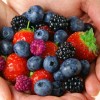 Fresh and frozen berries are popular foods. When berries are picked for fresh consumption, they are usually packed directly without washing because they are highly perishable. There is typically no “kill step” that would eliminate pathogens on fresh or frozen berries. Foodborne illness outbreaks have been associated with the consumption of fresh or frozen berries that were contaminated with pathogenic viruses, parasites, or bacteria. Contamination can occur before or during harvest or during final preparation. This 11-page fact sheet was written by Mary Palumbo, Linda J. Harris, and Michelle D. Danyluk, and published by the UF Department of Food Science and Human Nutrition, November 2014.
Fresh and frozen berries are popular foods. When berries are picked for fresh consumption, they are usually packed directly without washing because they are highly perishable. There is typically no “kill step” that would eliminate pathogens on fresh or frozen berries. Foodborne illness outbreaks have been associated with the consumption of fresh or frozen berries that were contaminated with pathogenic viruses, parasites, or bacteria. Contamination can occur before or during harvest or during final preparation. This 11-page fact sheet was written by Mary Palumbo, Linda J. Harris, and Michelle D. Danyluk, and published by the UF Department of Food Science and Human Nutrition, November 2014.
http://edis.ifas.ufl.edu/fs236
Budgets for Pasture Establishment: Seeded and Vegetative
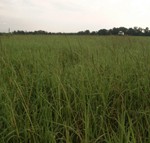 Budgets can be used to make rational decisions when establishing or renovating a pasture in Florida. This 3-page fact sheet is a guide for evaluating the costs of establishing a seeded-type pasture versus vegetatively propagated hybrid bermudagrasses. Written by Les Harrison, Jonael Bosques, and Yoana Newman, and published by the UF Department of Agronomy, August 2014.
Budgets can be used to make rational decisions when establishing or renovating a pasture in Florida. This 3-page fact sheet is a guide for evaluating the costs of establishing a seeded-type pasture versus vegetatively propagated hybrid bermudagrasses. Written by Les Harrison, Jonael Bosques, and Yoana Newman, and published by the UF Department of Agronomy, August 2014.
http://edis.ifas.ufl.edu/ag386
Peach Scab
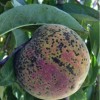 Peach scab is a disease caused by the fungus Cladosporium carpophilum. The pathogen can infect other fruits and nuts within the Prunus species, like almonds, apricots, nectarines, and plums. Peach scab is common during periods of humid weather because rain splashes the conidia (asexual spores) from the fungus between leaves, twigs, and fruit in the tree canopy, which spreads the disease. This 6-page fact sheet was written by Daniel Mancero-Castillo, Mercy Olmstead, and Phillip Harmon, and published by the UF Department of Horticultural Sciences, July 2014.
Peach scab is a disease caused by the fungus Cladosporium carpophilum. The pathogen can infect other fruits and nuts within the Prunus species, like almonds, apricots, nectarines, and plums. Peach scab is common during periods of humid weather because rain splashes the conidia (asexual spores) from the fungus between leaves, twigs, and fruit in the tree canopy, which spreads the disease. This 6-page fact sheet was written by Daniel Mancero-Castillo, Mercy Olmstead, and Phillip Harmon, and published by the UF Department of Horticultural Sciences, July 2014.
http://edis.ifas.ufl.edu/hs1249
Facts about Wildlife Diseases: Pseudorabies
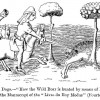 Pseudorabies primarily affects swine, but cattle, sheep and other mammals are susceptible to infection. Humans are not at risk. The superficial symptoms of this viral disease resemble rabies symptoms, thus the name pseudorabies. Although eliminated in commercial animals, feral swine populations in the United States continue to circulate the disease and provide a reservoir for outbreaks. Texas, Oklahoma, Florida, and Hawaii all have dense populations of feral swine with a high prevalence of pseudorabies. Feral swine, therefore, pose a serious risk to commercial swine operations, livestock, companion animals, and wildlife. This 4-page fact sheet was written by Samantha Wisely, and published by the UF Department of Wildlife Ecology and Conservation, August 2014.
Pseudorabies primarily affects swine, but cattle, sheep and other mammals are susceptible to infection. Humans are not at risk. The superficial symptoms of this viral disease resemble rabies symptoms, thus the name pseudorabies. Although eliminated in commercial animals, feral swine populations in the United States continue to circulate the disease and provide a reservoir for outbreaks. Texas, Oklahoma, Florida, and Hawaii all have dense populations of feral swine with a high prevalence of pseudorabies. Feral swine, therefore, pose a serious risk to commercial swine operations, livestock, companion animals, and wildlife. This 4-page fact sheet was written by Samantha Wisely, and published by the UF Department of Wildlife Ecology and Conservation, August 2014.
http://edis.ifas.ufl.edu/uw388
Peanut Variety Performance in Florida, 2010–2013
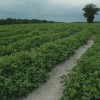 Variety choice is a critical management decision in producing a peanut crop. Since several good peanut varieties are available, it is essential to know each variety’s attributes and how different varieties might fit into a farm plan. This 7-page fact sheet provides data conducted from trials in Florida at UF/IFAS research centers located in Gainesville (Citra), Marianna, and Jay from 2010–2013. Written by Barry Tillman, Mark Gomillion, Justin McKinney, and George Person, and published by the UF Department of Agronomy, May 2014.
Variety choice is a critical management decision in producing a peanut crop. Since several good peanut varieties are available, it is essential to know each variety’s attributes and how different varieties might fit into a farm plan. This 7-page fact sheet provides data conducted from trials in Florida at UF/IFAS research centers located in Gainesville (Citra), Marianna, and Jay from 2010–2013. Written by Barry Tillman, Mark Gomillion, Justin McKinney, and George Person, and published by the UF Department of Agronomy, May 2014.
http://edis.ifas.ufl.edu/ag382
Can Maternal Colostrum Be Replaced by Commercial Products for Feeding Newborn Calves?
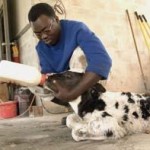 Colostrum management and feeding are critical for calf health, calves’ future productive life, and farm profitability. Current recommendations state that a calf needs to ingest at least 150–200 g of immunoglobulin G within two hours of birth, but when colostrum quality is poor or unavailable, colostrum replacer may be a suitable alternative. This 3-page fact sheet presents the results of a recent publication that evaluated the effects of feeding maternal colostrum, one dose of plasma-derived colostrum replacer, or one dose of colostrum-derived colostrum replacer on serum total protein, immunoglobulin G concentration, calf morbidity, calf mortality, and weight gain from birth to weaning. Written by Klibs N. Galvao, and published by the UF Department of Veterinary Medicine-Large Animal Clinical Sciences, May 2014.
Colostrum management and feeding are critical for calf health, calves’ future productive life, and farm profitability. Current recommendations state that a calf needs to ingest at least 150–200 g of immunoglobulin G within two hours of birth, but when colostrum quality is poor or unavailable, colostrum replacer may be a suitable alternative. This 3-page fact sheet presents the results of a recent publication that evaluated the effects of feeding maternal colostrum, one dose of plasma-derived colostrum replacer, or one dose of colostrum-derived colostrum replacer on serum total protein, immunoglobulin G concentration, calf morbidity, calf mortality, and weight gain from birth to weaning. Written by Klibs N. Galvao, and published by the UF Department of Veterinary Medicine-Large Animal Clinical Sciences, May 2014.
http://edis.ifas.ufl.edu/vm196
What Is the Most Cost-Effective Breeding Program for Lactating Dairy Cows: Timed AI, Estrous Detection, or a Combination of Both?
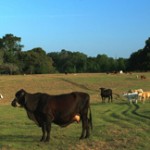 As any other business enterprise, the sustainability of a dairy farm is highly dependent on economics. Reproduction influences both milk production and number of replacement heifers available on a farm; therefore, reproductive efficiency becomes a key determinant of dairy cow profitability. Several parameters affect reproductive performance. This 4-page fact sheet presents information from recently published articles that looked at the economics of different reproductive programs for breeding dairy cows that use estrus detection only, timed AI only, or a combination of both. Written by Klibs N. Galvão, Gustavo M. Schuenemann, Eduardo S. Ribeiro, and Jose Eduardo P. Santos, and published by the UF Department of Veterinary Medicine-Large Animal Clinical Sciences, May 2014.
As any other business enterprise, the sustainability of a dairy farm is highly dependent on economics. Reproduction influences both milk production and number of replacement heifers available on a farm; therefore, reproductive efficiency becomes a key determinant of dairy cow profitability. Several parameters affect reproductive performance. This 4-page fact sheet presents information from recently published articles that looked at the economics of different reproductive programs for breeding dairy cows that use estrus detection only, timed AI only, or a combination of both. Written by Klibs N. Galvão, Gustavo M. Schuenemann, Eduardo S. Ribeiro, and Jose Eduardo P. Santos, and published by the UF Department of Veterinary Medicine-Large Animal Clinical Sciences, May 2014.
http://edis.ifas.ufl.edu/vm198
What Is the Most Cost-Effective Breeding Program for Breeding Heifers: Timed AI, Estrous Detection, or a Combination of Both?
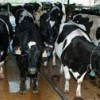 As any other business enterprise, the sustainability of a dairy farm is highly dependent on economics. In order to obtain a profitable return on assets, there is a constant need to maximize outputs and, oftentimes, to minimize inputs. Reproduction influences both milk production and number of replacement heifers available on a farm; therefore, reproductive efficiency becomes a key determinant of dairy cow profitability. This 3-page fact sheet presents information from recently published work that looked at the economics of different reproductive programs for breeding heifers that use timed AI only, estrus detection only, or a combination of both. Written by Klibs N. Galvão, Eduardo S. Ribeiro, and Jose Eduardo P. Santos, and published by the UF Department of Veterinary Medicine-Large Animal Clinical Sciences, May 2014.
As any other business enterprise, the sustainability of a dairy farm is highly dependent on economics. In order to obtain a profitable return on assets, there is a constant need to maximize outputs and, oftentimes, to minimize inputs. Reproduction influences both milk production and number of replacement heifers available on a farm; therefore, reproductive efficiency becomes a key determinant of dairy cow profitability. This 3-page fact sheet presents information from recently published work that looked at the economics of different reproductive programs for breeding heifers that use timed AI only, estrus detection only, or a combination of both. Written by Klibs N. Galvão, Eduardo S. Ribeiro, and Jose Eduardo P. Santos, and published by the UF Department of Veterinary Medicine-Large Animal Clinical Sciences, May 2014.
http://edis.ifas.ufl.edu/vm199
Can GnRH Be Used to Induce Ovulation Early in Lactation and Improve Fertility in Dairy Cows?
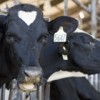 It is well established that early cyclicity results in increased pregnancy per artificial insemination and decreased time to pregnancy. But none of the previous studies has used synchronization programs such as the Presynch-Ovsynch as part of their reproductive management. This 2-page fact sheet presents the results of a recent paper that evaluated the effects of administration of GnRH at 17 ± 3 and 20 ± 3 DIM in Holstein dairy cows without a corpus luteum (CL) on induction of ovulation, uterine health, and reproductive outcomes. Written by Klibs N. Galvão, and published by the UF Department of Veterinary Medicine-Large Animal Clinical Sciences, July 2014.
It is well established that early cyclicity results in increased pregnancy per artificial insemination and decreased time to pregnancy. But none of the previous studies has used synchronization programs such as the Presynch-Ovsynch as part of their reproductive management. This 2-page fact sheet presents the results of a recent paper that evaluated the effects of administration of GnRH at 17 ± 3 and 20 ± 3 DIM in Holstein dairy cows without a corpus luteum (CL) on induction of ovulation, uterine health, and reproductive outcomes. Written by Klibs N. Galvão, and published by the UF Department of Veterinary Medicine-Large Animal Clinical Sciences, July 2014.
http://edis.ifas.ufl.edu/vm201
Targeting ADG of Developing Replacement Heifers Using Age and Body Weight
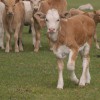 Heifer development continues to be one of the largest expenses to cow-calf operations, primarily due to cost of feed. Replacement heifers should be bred to calve at 24 months of age in order to maximize lifetime productivity of breeding females. Therefore, heifers should conceive at 15 months of age and achieve puberty at 13–14 months of age because heifers are infertile on the pubertal estrous cycle. This 4-page fact sheet was written by Phillip Lancaster and Cliff Lamb, and published by the UF Department of Animal Sciences, September 2014.
Heifer development continues to be one of the largest expenses to cow-calf operations, primarily due to cost of feed. Replacement heifers should be bred to calve at 24 months of age in order to maximize lifetime productivity of breeding females. Therefore, heifers should conceive at 15 months of age and achieve puberty at 13–14 months of age because heifers are infertile on the pubertal estrous cycle. This 4-page fact sheet was written by Phillip Lancaster and Cliff Lamb, and published by the UF Department of Animal Sciences, September 2014.
http://edis.ifas.ufl.edu/an305
Pests and Fungal Organisms Identified on Olives (Olea europaea) in Florida
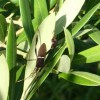 Olive production in Florida has increased over the last few years. As trees become available in nurseries many homeowners are planting them in their landscapes. Fortunately, olives are a relatively pest-free species, but some occasional invaders can be a nuisance or cause lasting harm. A few plant pathogens that may infect olives also can lead to a decline in overall plant health, fruit yield, or the visual appearance of plants. Following correct cultural practices when growing olives can reduce your chances of tree loss from pests and diseases. A survey of olive production and interviews with Florida growers in 2014 identified the pests and diseases described in this 5-page fact sheet, written by Jennifer L. Gillett-Kaufman, Sandra A. Allan, Jonael H. Bosques-Mendez, and Lyle J. Buss, and published by the UF Department of Entomology and Nematology, September 2014.
Olive production in Florida has increased over the last few years. As trees become available in nurseries many homeowners are planting them in their landscapes. Fortunately, olives are a relatively pest-free species, but some occasional invaders can be a nuisance or cause lasting harm. A few plant pathogens that may infect olives also can lead to a decline in overall plant health, fruit yield, or the visual appearance of plants. Following correct cultural practices when growing olives can reduce your chances of tree loss from pests and diseases. A survey of olive production and interviews with Florida growers in 2014 identified the pests and diseases described in this 5-page fact sheet, written by Jennifer L. Gillett-Kaufman, Sandra A. Allan, Jonael H. Bosques-Mendez, and Lyle J. Buss, and published by the UF Department of Entomology and Nematology, September 2014.
http://edis.ifas.ufl.edu/in1046
Florida Nursery Crops and Landscaping Industry Economic Impacts, Situation, and Outlook
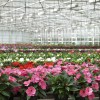 Florida is one of the leading environmental horticulture producers in the United States, ranked second only to California. In 2010, total industry sales were estimated at $12.33 billion. This 10-page report summarizes the current situation, economic impacts, and outlook for the environmental horticulture industry in Florida. Written by Hayk Khachatryan and Alan W. Hodges, and published by the UF Department of Food and Resource Economics, September 2014.
Florida is one of the leading environmental horticulture producers in the United States, ranked second only to California. In 2010, total industry sales were estimated at $12.33 billion. This 10-page report summarizes the current situation, economic impacts, and outlook for the environmental horticulture industry in Florida. Written by Hayk Khachatryan and Alan W. Hodges, and published by the UF Department of Food and Resource Economics, September 2014.
http://edis.ifas.ufl.edu/fe946
When Should We Stop Breeding Dairy Cows?
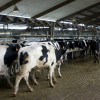 The decision of when to start and when to stop breeding cows during a lactation is often a challenging one for dairy producers. This 3-page fact sheet presents practical rules on how to determine when to stop breeding Holstein dairy cows based on persistency of milk production and break-even point for milk production. Written by Klibs N. Galvão and Albert De Vries, and published by the UF Department of Veterinary Medicine-Large Animal Clinical Sciences, July 2014.
The decision of when to start and when to stop breeding cows during a lactation is often a challenging one for dairy producers. This 3-page fact sheet presents practical rules on how to determine when to stop breeding Holstein dairy cows based on persistency of milk production and break-even point for milk production. Written by Klibs N. Galvão and Albert De Vries, and published by the UF Department of Veterinary Medicine-Large Animal Clinical Sciences, July 2014.
http://edis.ifas.ufl.edu/vm202
Should You Breed Cows during the Summer in the Southeastern United States? An Economic Analysis of a Dairy Herd in Florida
 In the southeast United States, since dairy cows experience decreased reproductive performance during the hot and humid summers, some dairy farmers delay breeding until the cooler fall. But there is no economic data to support this practice. This 3-page fact sheet presents the results of a recent paper that evaluated the effects that delaying breeding during the summer has on cow performance and profitability in Florida. Written by Klibs N. Galvão and Albert De Vries, and published by the UF Department of Veterinary Medicine-Large Animal Clinical Sciences, July 2014.
In the southeast United States, since dairy cows experience decreased reproductive performance during the hot and humid summers, some dairy farmers delay breeding until the cooler fall. But there is no economic data to support this practice. This 3-page fact sheet presents the results of a recent paper that evaluated the effects that delaying breeding during the summer has on cow performance and profitability in Florida. Written by Klibs N. Galvão and Albert De Vries, and published by the UF Department of Veterinary Medicine-Large Animal Clinical Sciences, July 2014.
http://edis.ifas.ufl.edu/vm195